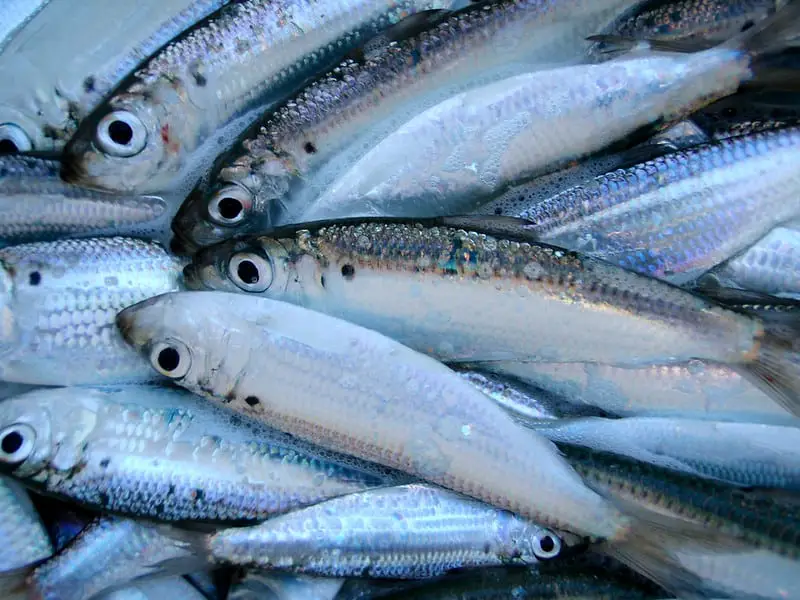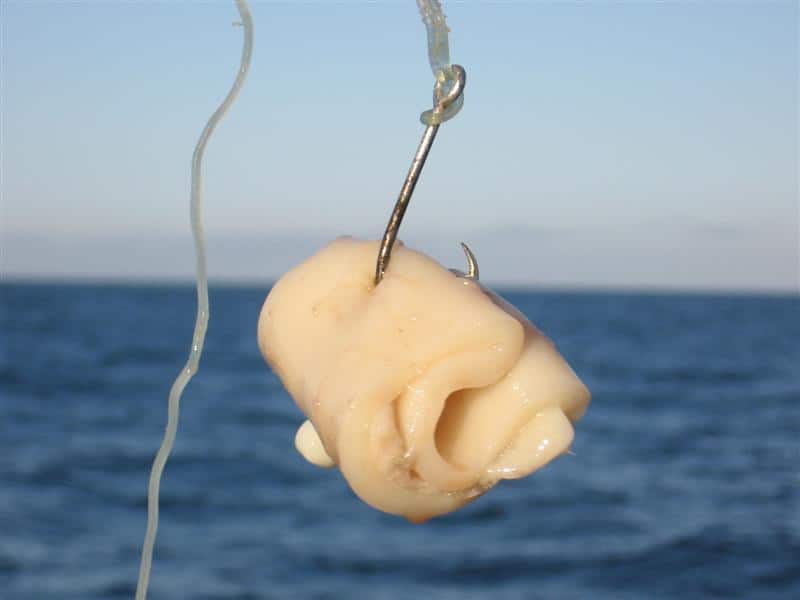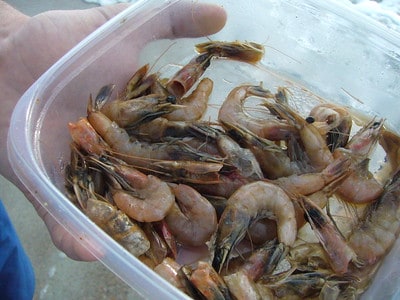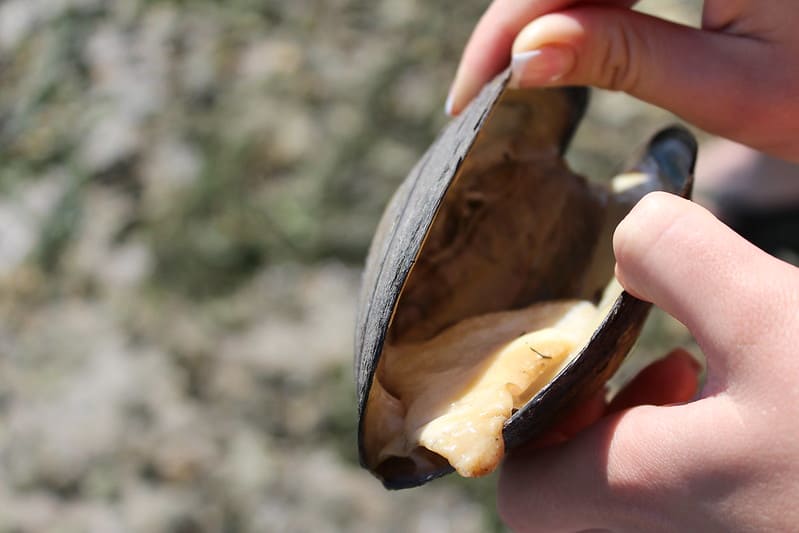Disclosure: Some posts contain affiliate links, which earn us a commission if you make a purchase through them. Positive Fishing © participates in various affiliate networks including the Amazon Services LLC Associates Program.
When getting geared up for a sea fishing trip, there is a question you will definitely have to solve at some point: What baits to choose to use?
Let’s be honest, there is a lot of baits out there, and they can vary a lot when it comes to efficiency. Some baits are just better than others – and this is a fact!
This can, of course, depends on the fish species you are after, and a lot of other conditions such as season, time of the day, fishing technique, etc. But in general, there are good baits, bad baits, and outstanding baits – and you definitely want to stack up with the latter when hitting the sea!
The Best Baits for Saltwater Fishing
- Sardines
- Squid
- Sea Worms
- Shrimps
- Mussels
If you want to learn what baits are the best options that will always catch fish, keep reading, as I will review the following 5 baits that are all-time favorites for saltwater fishing!
This article is targetted at the species of fish in the Mediterranean sea, but all these baits would be able to catch fish in any saltwater around the world.
Sardines

If I was to choose only one bait from everything out there, then sardines are my first choice. Why?
Well, to put it simply, everything out there will eat a fresh sardine. And when I say everything, I really mean that! Also, they are very cheap and easily accessible, either fresh or frozen.
A whole sardine will catch anything from seabass to tuna! You can even use the intestines as an outstanding bait for mullet fishing or cut the sardines in pieces and fish with every fishing technique imaginable.
How to fish with sardines?
The first thing you need to know about when fishing with sardines is that you need them to be fresh. Their meat is full of oil and very soft, and if they are not fresh and kept on ice, it is nearly impossible to secure them on the hook.
Fresh sardine bait is usually used when fishing from a boat and will have the best effect if used together as a chum and a bait. Tuna fishermen will use large quantities of whole and cut sardines to make a feeding trail when drifting, and present the baited sardine without any weight, to mimic the rest of the chum.
The same technique can be used for any other mid-water fish such as mackerel, dorado, or bonito, but sardines are also very effective also when fishing from the shore. Seabass and various breams will be very quick to react to chummed sardines, and quite eager to take your bait!
Due to them being soft and in the same way very much desirable, small fish will destroy them in no time – which is the reason they are not the best solution for bottom fishing, especially during the warm months. But – there is a solution for that!
Actually, two solutions:
Filo elastico
This is one of the best, and cheapest additions to your tackle box. This thin, elastic thread is designed for securing your bait on the hook: if used correctly, you can turn a tender sardine fillet into a very resistant ‘’sausage’’ that will give you the time needed for the bigger fish to find the bait!
Salt
Salted sardines are not as good as the fresh ones, but really not that far behind. They have a stronger smell, very resistant texture, and sink faster than fresh sardine. Salting sardines is very easy and cheap, and once salted they can be kept for months without a problem!
I strongly recommend using salt if you have bought frozen sardines: when frozen, they get very soft, and salt will make them much more usable for fishing.
Squid

When used live squid in trolling techniques, squid is the best bait for dentex and amberjack when out on a boat. When squid is used dead, either whole or cut in pieces, it is by far the best bottom bait you can have with you!
I cannot really pinpoint the reason why fish love squid so much, but it is a fact. I do know why fishermen love to use it though!
Unlike sardines, squids have a ‘’gummy’’ texture that makes them extremely resistant to small fish attacks. Also, they have a very strong scent that attracts almost every fish species out there, and is, therefore, a perfect solution for utilizing various bottom fishing techniques!
How to fish with squid
For most bottom fishing techniques, it is best to cut the squid into strips that you can additionally secure to the hook with filo elastico. When fishing with multiple hooks, I will usually put the biggest bait on the bottom hook (like the whole squid head) and the strips on the upper hooks. If you are fishing for bigger bottom fish, such as conger eel or ling, feel free to use the whole squid!
Apart from bottom fishing (both from boat and shore), squid is also a great bait for float fishing! The Squid Tentacles are my favorite when fishing on a spot with a lot of small fish, as it is very hard for the smaller fish to eat and take the tentacles off from the hook.
I would strongly advise keeping them fresh and on ice: unlike sardines, they will not get soft, but will spoil in no time! And trust me, there is nothing more pungent than spoiled squid.
The stench from old squid will end up being everywhere you touch, on your clothes and on your hands and arms. In addition, even your fishing gear will end up getting that putrid smell, and it is not something you want to experience.
You can also put squid bait in salt in order to preserve them, but be aware they will become more rubber-like and not so attractive to fish.
As I have mentioned, live squid bait is one of the best trolling baits out there. But this is a whole story I will cover in another article!
Sea worms
If you ask a competitive sea angler what is his favorite bait, most anglers will always include worms as an answer.
There are many types of sea worms that you can use for fishing. Three of the most popular ones are:
- The most famous being the Eunice Gigantea which can grow up to 3 meters and has a legendary status among fishermen!
- Then there is a well-known and incredibly resistant ‘bibi’ worm and is around 2” to 6” long. It is sometimes referred to as the “peanut worm”
- A small, tender ‘’coreano’’ worm which is commonly known as a ragworm.
There are a lot more worm bait species, but the ones mentioned are among the most popular out there.
Eunice Gigantea
Also called ‘’Big Sea Worm’’, this monstrous creature is known to be the best bait for night fishing. Partly because it is luminous, partly because it produces vibrations with its ‘’legs’’, and partly because it has an irresistible smell. All members of the Sparidae fishing family cannot resist it!
It is usually purchased alive, although you can also purchase it salted. It is definitely one of the more expensive baits, as a meter of worm goes for around 10 Eur!
When fishing, you need to cut the 2-3 cm pieces starting from the tail, to keep the worm alive as long as possible. It has a good consistency for hooking, but will not last long on the hook if there are many smaller fish nearby. Filo elastico can help, but due to its attractive nature, these big sea worms tend to not last too long on the hook!
However, if you want to have the best bait when bottom fishing during the night, this is the bait to use.
Bibi
This leathery worm has the status of the best bait for sea bream, sea bass, gilthead sea bream, white sea bream, and golden bream.
A Kilo of fresh Bibi is around 30 Eur, so it is not a cheap bait, and it is also a struggle to keep them alive if you are not going fishing the same day. They are also available salted, but fresh ones are far better.
To bait them, you need a baiting needle as they need to be used whole, without cutting. As they are very resistant to small fish, golden bream will have enough time to find the bait – and trust me, they love them!
Coreano
Small, tender, and irresistible. This thin worm is usually used for bottom fishing for species such as red bream and is notorious for being attacked and devoured by small fish. Therefore choosing the right spot where the larger fish reside, is critical.
However, I love to use them, as all bottom fish will eat them, and you can get 10 live worms for around 5 euros. Not cheap, but an affordable price if you find that good fishing spot.
They are very easy to keep alive in your refrigerator! They will always produce results, and competition anglers love them!
Shrimps

I doubt there is a sea angler out there without some experience with fishing with shrimp – but if there is, this is definitely time to change this!
Generally speaking, various shrimp species are one of the most valuable food sources in the sea. They live everywhere, and everything eats them! So it is logical to consider them as a necessary bait, especially in demanding fishing conditions.
You can use shrimp bait alive, or dead. Let us review both options.
Live shrimps
There is a simple problem regarding live shrimps: you need to catch them first!
There are various ways of doing so, and they range from demanding and time-consuming to very easy and efficient – which mainly depends on the type of terrain you can access. You can also sometimes buy live shrimps in a fishing shop, but do not count on that.
However, if you have time and knowledge to gather some life shrimps, go for it!
To fish with live shrimps, you need a fine type of hook made from thin wire, a fine tackle setup (either from float or bottom fishing technique), and a bucket of seawater with a good aerator.
There is hardly any fish that will avoid a live shrimp, which is kind of a problem when you have a place full of small fish. Therefore, I prefer using shrimps during the winter saltwater fishing season: since smaller fish are more scarce., especially closer to the shore, and the efficiency of a shrimp grows substantially.
Shrimps are my favorite bait for fishing seabass in shallow water, and also one of the best options for bottom fishing from the boat. Golden bream, red bream, black bream – every kind of bream love a live shrimp, both with everything else swimming down there!
Dead shrimps
You can buy them frozen, fresh from the fishing market, or preboiled in food shops. All of them work, with fresh ones being the best as they have the texture needed for hooking them successfully.
Frozen ones tend to be very soft, while preboiled shrimps have a crumbly texture that makes them almost impossible to use on a hook.
However, these are also some of the most famous competition fishing baits, and with some knowledge, you can use them with great success!
The secret in hooking them is using previously mentioned elastic thread – and with some help of a special baiting tool made to hold shrimps in place while wrapping them up, you can make a perfect shrimp bait ‘’sausage’’ them will get you some baits in no time!
The biggest downside of dead shrimps is their price!
Mussels

There is a reason mussels are the last bait in this list. But do not get me wrong – they are not last because they are not good!
Actually, clam meat is one of the best baits available!
The problem with mussels is – they are by far the softest bait in this list and are sometimes almost impossible to hook. Imagine the chances of catching something on a bait you are even unable to cast without falling from the hook.
One way of solving this problem is fishing with a whole mussel, without breaking it – but this works only when trying to catch golden bream.
The easiest way is – again, to use salt.
Salted mussels will regain some of the texture needed for hooking them, and with the help of almighty filo elastico, they will be good enough to endure a couple of small fish nibbles – but only a couple of them.
If you have a strike on your mussel bait and miss it, there is no point in waiting for another one. Your hook will be empty! And this is the biggest downside of this bait.
But if you have a good spot where this is not the issue, the mussel is one of the key baits you should add to your bait box. All bottom species will eat them, and you might have very fast-paced fishing if everything matches up!
You can buy them fresh from the fishing market, or cleaned and frozen. Both are good, and I prefer the cleaned frozen version, as it is time-consuming and messy to empty the shells by yourself!
Final Thoughts
Apart from the mentioned baits in this article, there are a lot more options. A mackerel cut bait is a very attractive bait when sea fishing.
But if you are not sure what to use when trying a new fishing spot, all of the baits mentioned above will successfully catch many fish, and you will not lose time guessing and fishing by trial and error.
Having the right bait choices on your hook is absolutely critical.
You can read more about buying supermarket saltwater sea fishing baits here!
- 5 Best Fishing Bags For Getting Your Gear Organized - January 13, 2025
- 4 Essential Surf Fishing Rigs - January 11, 2025
- How To Know The Sex Of A Fish You Have Caught? - December 9, 2024

